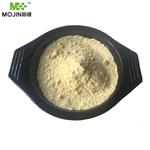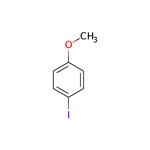Description
4-Iodoanisole (chemical formula: C7H7IO) is an organic compound being soluble in ethanol, ether and chloroform. It has a wide range of medicals industrial applications. For example, it can be used as human and animal nutrition products, antiseptics, disinfectants, pharmaceutical intermediates, polarizing films for liquid crystal display (LCD) chemicals. Its iodine derivatives can also be used as organic building blocks and analytic reagents.
References
https://www.fishersci.pt/shop/products/4-iodoanisole-98-7/11480113
Chemical Properties
off-white to brown crystalline powder and chunks. Melting point 51-52 ℃, boiling point 237 ℃ (96.8kPa). Soluble in organic solvents such as alcohol and ether, but insoluble in water. Iodine can be easily separated and analyzed by light.
Uses
4-Iodoanisole is used in wide range of medicals industrial applications as well as in human and animal nutrition products, pharmaceutical intermediates, polarizing films for Liquid Crystal Display (LCD) chemicals. Iodine derivatives are also used as organic building blocks, analytical reagents.
Preparation
4-Iodoanisole is synthesized by the reaction of anisole with iodine chloride. Add anisole to glacial acetic acid, stir and slowly add iodine chloride. After the addition was completed, the temperature was refluxed for 3.5h. Cool, pour into ice water, and precipitate p-iodoanisole. After it was separated, the free iodine was washed with 5% sodium sulfite, then washed with water, distilled under reduced pressure, and the fractions with a boiling point of 140-160 °C (5.33 kPa) were collected and cooled to 0 °C for filtration. Wash with methanol and recrystallize to obtain the finished product.
Definition
ChEBI: (alpha-D-mannosyl)7-beta-D-mannosyl-diacetylchitobiosyl-L-asparagine, isoform B (protein) is a member of methoxybenzenes.
Purification Methods
Crystallise 4-iodoanisole from aqueous EtOH and/or distil it under vacuum. [Beilstein 6 H 208, 6 I 109, 6 II 199, 6 III 744, 6 IV 1075.]




